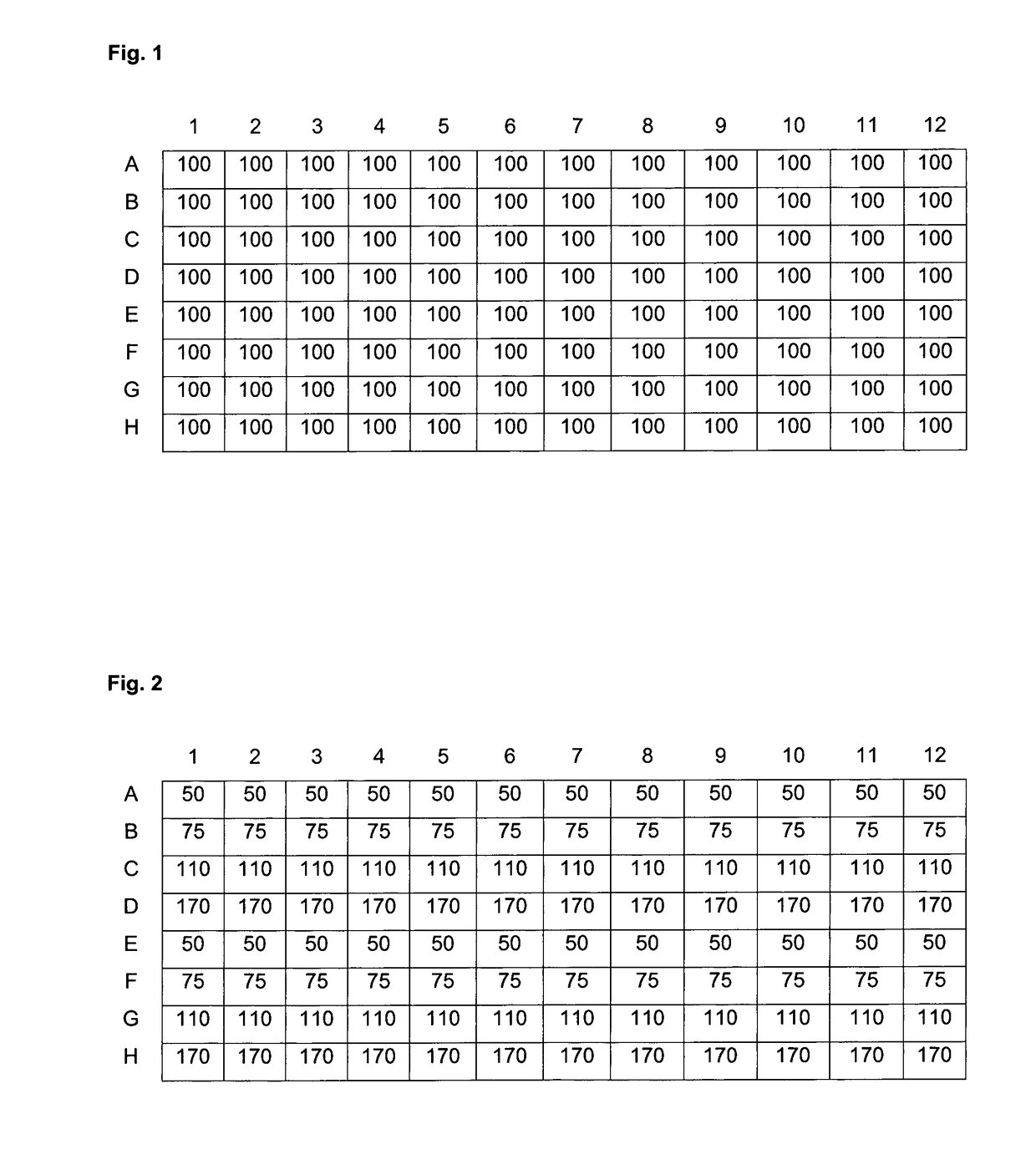Hydroxylated polyamine derivatives as transfection reagents
a technology of hydroxylated polyamine and transfection reagent, which is applied in the field of polyamine derivatives, can solve the problems of low stability of the complex in solution, and achieve the effect of high signal-to-noise ratio and superiority to commercially available transfection agents
- Summary
- Abstract
- Description
- Claims
- Application Information
AI Technical Summary
Benefits of technology
Problems solved by technology
Method used
Image
Examples
example 1
Modification of Polyamines
[0253]Linear PEI (free base) having an average molecular mass of 2 kDa or 25 kDa was from Polysciences. Branched PEI (free base) of 10 kDa size was from Aldrich. The polymers were dissolved in absolute ethanol at a concentration of 250 mono-mM; that is the concentration of nitrogens was 250 mM. Propylbromide, hexylbromide, nonylbromide and dodecylbromide (all from SIGMA) were dissolved in absolute ethanol at 250 mM and 3-bromopropanol, 4-bromobutanol, 5-bromopentanol, 6-bromohexanol, 9-bromononaol and 12-bromododecanol were dissolved in absolute ethanol at 500 mM. K2CO3 was used as a 6 M solution in water.
[0254]For the modification of 100 μmol polyamine (based on nitrogen atoms in the transfectant), the following solutions were pipetted per reaction:[0255]400 μl polyamine solution[0256]X μl of the ω-bromoalcohol[0257]Y μl of the 1-bromoalkane[0258]ethanol up to 650 μl[0259]33 μl K2CO3
[0260]All mixtures were sealed and incubated for 7 days at 60° C. in an o...
example 2
Complexation with siRNA
[0261]Modified polyamines were hydrated for 20 min in 50 μl of buffer pH4 (10 mM HAc, 10 mM NaH2PO4, pH4 with NaOH). 50 μl of a siRNA (2 μM in buffer pH4) were added and after 2-3 min the polymer-siRNA solution was brought to pH7 using 10 μl of 160 mM NaOH.
example 3
Cultivation of Cells
[0262]HeLa cells were cultivated in 100 μl of RPMI1640 medium (PAA Lab GmbH) supplemented with 10% FCS (Sigma-Aldrich), 1×Pen / Strep (PAA lab GmbH) solution (according to the instructions of the manufacturer) and seeded at a density of 4000 cells / well in a 96 well-plate. The density of live cells was measured using the Countess Cell counter (Invitrogen). Cells were cultivated in a humidified incubator at 37° C. and 5% CO2. 24 h after plating cells were supplied with fresh complete medium and transfected the same day.
PUM
| Property | Measurement | Unit |
|---|---|---|
| molar ratio | aaaaa | aaaaa |
| partition coefficient log P | aaaaa | aaaaa |
| partition coefficient log P | aaaaa | aaaaa |
Abstract
Description
Claims
Application Information
 Login to View More
Login to View More - R&D
- Intellectual Property
- Life Sciences
- Materials
- Tech Scout
- Unparalleled Data Quality
- Higher Quality Content
- 60% Fewer Hallucinations
Browse by: Latest US Patents, China's latest patents, Technical Efficacy Thesaurus, Application Domain, Technology Topic, Popular Technical Reports.
© 2025 PatSnap. All rights reserved.Legal|Privacy policy|Modern Slavery Act Transparency Statement|Sitemap|About US| Contact US: help@patsnap.com



